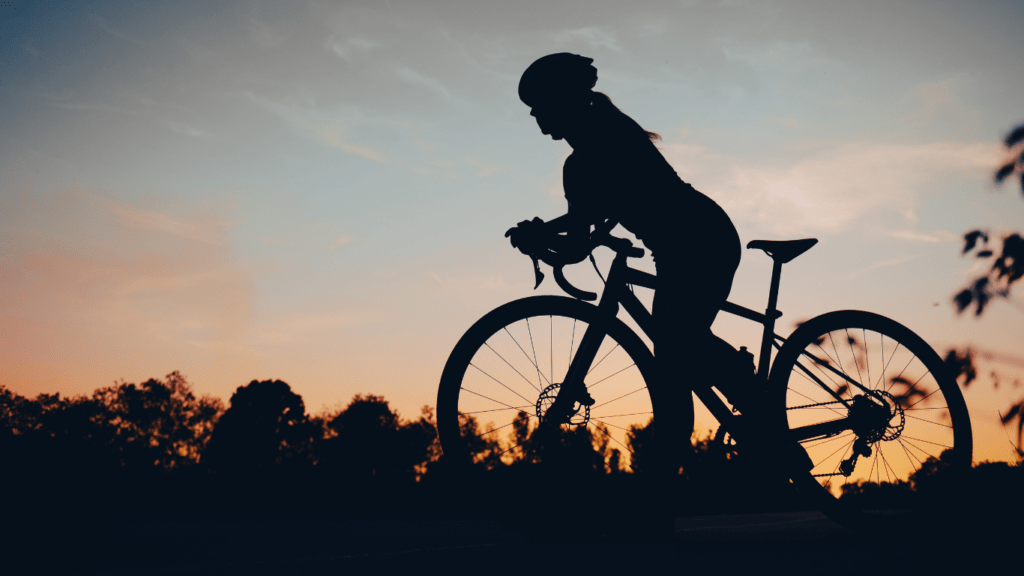Understanding the Challenges for New Cyclists
New cyclists often face a variety of challenges that can hinder progress and dampen enthusiasm. Recognizing these challenges is the first step to overcoming them.
Identifying Common Obstacles
Several obstacles commonly affect new cyclists such as:
- Physical Discomfort: Soreness, especially in the legs and back, often plagues beginners.
- Weather Conditions: Adverse weather conditions, like rain or extreme heat, can be discouraging.
- Time Management: Balancing cycling with work, family, and social commitments can be challenging.
- Technical Knowledge: Understanding bike mechanics and maintenance can be daunting for those new to cycling.
Overcoming Mental Barriers
Mental barriers often present significant challenges:
- Fear of Traffic: The thought of biking alongside cars can intimidate many beginners.
- Self-Doubt: Questioning one’s abilities can hinder progress and enjoyment.
- Lack of Motivation: Staying motivated can be tough when progress seems slow or goals appear distant.
- Social Pressure: Concerns about keeping up with more experienced cyclists can cause anxiety.
Recognizing and addressing these mental and physical challenges helps new cyclists stay motivated and committed to their cycling journey.
Setting Achievable Goals

Aligning motivation with realistic targets can boost confidence and commitment for new cyclists.
The Importance of Small Wins
Breaking larger objectives into smaller, more manageable tasks keeps motivation high. Incremental goals ensure steady progress and highlight improvements.
For instance, instead of aiming to cycle 50 miles in one session, start with 5 miles. Completing these smaller milestones builds confidence, triggers dopamine release, and gradually prepares the body for higher endurance levels.
These victories reinforce positive habits, making it easier to stay committed long term.
Using a Progress Tracker
A progress tracker visualizes growth, maintains focus, and measures achievements. Apps like Strava and Garmin Connect help log distances, speeds, and cycling routes.
Recording metrics like heart rate and calories burned provides tangible evidence of improvement. Seeing these data points enhances motivation by demonstrating concrete results.
Additionally, tracking progress helps identify patterns, adjust training schedules, and set future goals that align with past performance.
Consistently updating the tracker fosters a sense of accountability and accomplishment, reinforcing ongoing efforts.
Finding a Cycling Community
Joining a community enhances the cycling experience and boosts motivation. Connecting with like-minded individuals introduces support, accountability, and social interaction.
Benefits of Joining Cycling Groups
Joining cycling groups offers several advantages. Riding with others can increase safety, as drivers are more likely to notice a group than a single cyclist.
Groups often provide structured rides with leaders, ensuring safe and enjoyable routes.
In addition, groups offer opportunities to learn. Experienced riders share tips on techniques, equipment, and maintenance. They give real-time advice and feedback during rides.
These insights can accelerate skill development.
Motivation thrives in a supportive environment. Seeing others’ progress inspires and pushes you to keep improving. Shared goals within the group create collective challenges and achievements.
Engaging in Local Events
Participating in local cycling events creates a sense of camaraderie and excitement. Many communities host regular races, charity rides, and fun rides.
Events present a platform for goal setting. Training for an event gives purpose to your rides and provides milestones to strive for. Completing an event enhances satisfaction and confidence.
Networking opportunities abound at events. Meeting fellow cyclists, local bike shop owners, and event organizers can expand your cycling network.
These connections often lead to finding new riding partners and discovering more group rides.
Equipment and Gear Essentials
Having the right equipment and gear is crucial for new cyclists to stay motivated and enjoy their rides.
Choosing the Right Bicycle
Selecting the perfect bicycle involves considering several factors. First, determine the type of cycling you intend to do: road cycling, mountain biking, or commuting.
Road bikes, for example, are light and fast, suitable for paved surfaces, while mountain bikes are robust, ideal for rough terrains.
Test ride different bicycles to find one that’s comfortable and suits your intended use.
Fit is essential; ensure the frame size matches your height and that the saddle and handlebar adjustments provide a comfortable riding position.
Must-Have Safety Gear
Prioritizing safety gear keeps cyclists protected and builds confidence. Start with a well-fitted helmet adhering to safety standards like CPSC or EN1078.
Reflective clothing and accessories such as vests and ankle bands enhance visibility, especially in low-light conditions. Invest in a pair of gloves to improve grip and hand protection.
Front and rear lights are crucial, even during the day, to increase visibility to other road users. Consider padded shorts to reduce saddle discomfort and wear cycling-specific shoes for better pedal efficiency.
Additionally, carrying a basic repair kit gives peace of mind when facing minor mechanical issues during rides.
Staying Motivated with Regular Rides
Sticking to a routine helps keep cycling enjoyable and engaging. Here are strategies to maintain motivation through regular rides.
Incorporating Variety in Routes
Exploring different routes adds excitement and challenges to rides. I recommend planning new routes weekly using apps like Komoot or Ride with GPS.
Trying varied terrains, like hills, flat roads, and trails, increases skill diversity and keeps rides interesting. For example, alternating between urban paths and off-road trails offers unique experiences and prevents monotony.
Setting Consistent Riding Schedules
Establishing a regular riding schedule fosters consistency and builds a habit. I suggest starting with specific days and times each week, like Tuesday and Thursday evenings or Saturday mornings.
Consistency ensures incremental improvements and makes cycling part of a routine. Using calendar reminders or ride planners enhances adherence to the schedule, ensuring regular practice and progression.

 I'm Daniel Leverette, and I’m excited to be part of the incredible team at Cycle Smooth Ride Long. Cycling has always been a passion of mine, and now, I get to share that passion with you by bringing expert insights, reviews, and tips to help you elevate your ride.
At Cycle Smooth Ride Long, we believe that every cyclist deserves the best experience, whether you’re hitting the pavement for a casual ride or gearing up for an intense training session. My goal is to ensure that you have the knowledge and tools you need to enjoy every mile, from choosing the right gear to optimizing your nutrition and fitness.
I'm Daniel Leverette, and I’m excited to be part of the incredible team at Cycle Smooth Ride Long. Cycling has always been a passion of mine, and now, I get to share that passion with you by bringing expert insights, reviews, and tips to help you elevate your ride.
At Cycle Smooth Ride Long, we believe that every cyclist deserves the best experience, whether you’re hitting the pavement for a casual ride or gearing up for an intense training session. My goal is to ensure that you have the knowledge and tools you need to enjoy every mile, from choosing the right gear to optimizing your nutrition and fitness.
